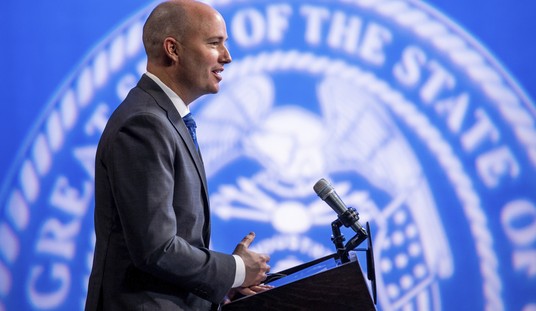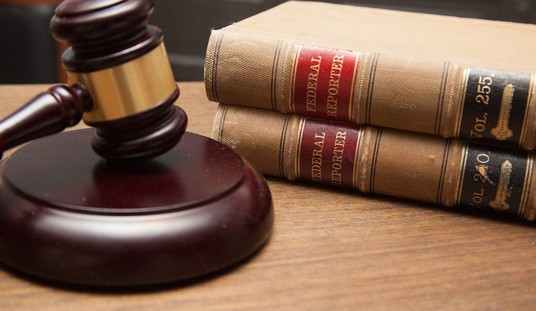This Week in American Military History:
Nov. 8, 1805: The U.S. Army’s Corps of Discovery — best known as the Lewis and Clark expedition — led by Capt. (future governor of the Lousiana Territory) Meriwether Lewis and Capt. (future Brig. Gen. of Lousiana Territory militia and governor of the Missouri Territory) William Clark reach the Pacific Ocean.
In his journal, Clark writes (unedited): “Great joy in camp we are in view of the Ocian this great Pacific Ocean which we been so long anxious to See. and the roreing or noise made by the waves braking on the rockey shores (as I Suppose) may be heard distinctly.”
Nov. 8, 1942: U.S. and British forces begin landing in French North Africa, primarily Morocco and Algeria. Codenamed Torch, the operation is a huge success: Vichy French (Nazi collaborating) forces capitulate within two days, and the Allies establish a major foothold in Africa.
Nov. 8, 1950: U.S. Air Force 1st Lt. Russell J. Brown, flying an F-80 Shooting Star, shoots down a North Korean MiG-15 fighter in history’s first jet-to-jet combat. The dogfight, which lasts only 60 seconds, nearly kills Brown who barely manages to pull his shuddering aircraft out of a steep dive after the victory.
Nov. 10, 1775: Happy Birthday and Semper Fidelis to “the world’s most exclusive gun club!” The Continental Congress authorizes the establishment of a force of American Marines for service on land and sea in the American War of Independence.
The legislation reads (unedited):
“Resolved, That two Battalions of marines be raised, Consisting of one Colonel, two Lieutenant Colonels, two Majors, and other officers as usual in other regiments; and that they consist of an equal number of privates with other battalions; that special care be taken, that no persons be appointed to office, or inlisted into said Battalions, but such as are good seamen, or so aquatinted with maritime affairs as to be able to serve to advantage by sea when required: that they be inlisted and commissioned to serve for and during the present war between Great Britain and the colonies, unless dismissed by order of Congress: that they be distinguished by the names of the first and second battalions of American Marines, and that they be considered as part of the number which the continental Army before Boston is ordered to consist of.”
This directive heralds the birthday of the Marine Corps. The first recruits to enlist — two weeks later — will be a motley mix of young adventurers and street toughs captained by the barkeep of a Philadelphia alehouse.
Quickly whipped into a crack contingent of seagoing soldiers, the Marines will evolve into one of the world’s premier military organizations, or — as rocker Ted Nugent says in a 2008 tribute to the Corps — “the world’s most exclusive gun club.”
Nov. 11, 1839: Virginia Military Institute opens its doors for the first time.
Nov. 11, 1865: Dr. Mary Edwards Walker, a surgeon contracted to the Union Army, becomes the first and only female recipient of the Medal of Honor.
Walker receives the Medal for “meritorious service.” But her award will be rescinded in 1917 when standards are stiffened and recipients have to have been engaged in “actual combat with an enemy.” Nevertheless, Walker refuses to surrender the Medal, wearing it every day of her life until her death in 1919.
Walker’s award will be reinstated in 1977.
Nov. 11, 1918: World War I ends with the signing of the armistice between the Germans and the Allies on the “eleventh hour of the eleventh day of the eleventh month.” Thus, Armistice Day, which in the United States will evolve into our present Veterans Day.
In 1927, nine years after the war, Pres. Calvin Coolidge will issue a congressionally authorized proclamation calling for the display of U.S. flags on all government buildings to remember Armistice Day. In 1938, Pres. Franklin D. Roosevelt will sign a bill into law making Armistice Day an official holiday within the District of Columbia. In 1954, Congress will change the name to Veterans Day to honor all American servicemen and women from all eras, and Pres. (retired Gen.) Dwight D. Eisenhower will call on the entire nation to appropriately observe the day.
Nov. 12, 1912: Nearly three years to the day before Lt. Commander Henry Mustin becomes the first American to make a catapult launch from a ship underway (see last week), Lt. Theodore Gordon Ellyson makes the first successful aircraft catapult launch in Naval aviation history. He does so in a Curtiss A-3 launched from a stationary coal barge.
Ellyson will rise to the rank of commander, receive the Navy Cross for service in World War I, and be killed in a plane crash in 1928.
Nov. 12, 1942: The Naval Battle off Guadalcanal — pitting U.S. and Australian forces against the Japanese — opens, which will not only result in heavy losses for the Japanese, but will effectively turn the enemy’s prosecution of the war from offense to defense.
Nov. 14, 1910: Our Naval aviation firsts continue with Eugene B. Ely making the first airplane takeoff from a ship. He does so in a Curtiss Flyer off the cruiser USS Birmingham anchored in Hampton Roads, Virginia.
Readers will recall Ely’s making the first-ever airplane-landing aboard ship (the anchored cruiser USS Pennsylvania) in Jan. 1911, then being killed in a crash during an aerobatic demonstration in October.
AUTHOR’S NOTE: “This Week in American Military History,” appears every week as a feature of HUMAN EVENTS.
Let’s increase awareness of American military tradition and honor America’s greatest heroes by supporting the Medal of Honor Society’s 2010 Convention to be held in Charleston, S.C., Sept. 29 – Oct. 3, 2010 (for more information, click here).








Join the conversation as a VIP Member